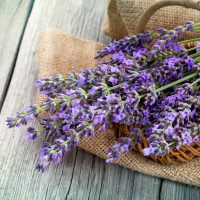Sopping, with no sign of stopping, either - then a breather. Warm again, storm again, what is the norm, again? It’s fine, it’s not, it’s suddenly hot: Boom, crash, lightening flash... from Old Farmer’s Almanac.
Dampness moves slowly seeping, sopping, chilling or sweating, clouding and blocking energy. Wind and warmth will blow it away and dry it up.
Herbs can help drain dampness, warm and move it away. There are specific categories of herbs, generally acrid or bitter, able to disperse and drain the dampness in the body through drying and opening up routes for release. These herbs, like ginger or cinnamon, are used as part of treatments to relieve the pain of arthritis, sciatica, and muscle spasms or cramps. They can also relieve stiffness in joints and numbness and are warming. Most have anti-inflammatory properties. The blocked movement from accumulation of dampness is stagnation; qi or energy is not flowing well through the body. Aromatic or fragrant categories of herbs help resolve stagnation such as bloating, decreased appetite or nausea. Lavender, orange peel, and cardamom do this. A third type of herb, like sage is more cooling for use in damp heat situations and also works to drain moisture that has accumulated causing swelling and mucus. Lots of herbs grown in China, India, and here in the West fall into one of these categories and can make a difference if used correctly.
Safe herbs to select for herbal teas include:
- Cinnamon
- Turmeric
- Lavender
- Sage
- Cardamom
- Orange peel
- Ginger
- Horsetail
- Juniper berry
- White pine
- Yerba santa
References
Maciocia G. The Foundations of Chinese Medicine. New York: Churchill Livingstone, 2004, p691-698.
Wood M. The Book of Herbal Wisdom. Berkley California: North Atlantic Books, 1997.
Pitchford P. Healing with Whole Foods. Berkley California: North Atlantic Books, 2002.
Chen JK and Chen TT: Chinese Medical Herbology and Pharmacology. City of Industry California: Art of Medicine Press, Inc.; 2012.
Wang J, et al. Phlegm-dampness constitution: genomics, susceptibility, adjustment, and treatment with Traditional Chinese Medicine. Am J Chin Med. 2013;41(2):253-62.
